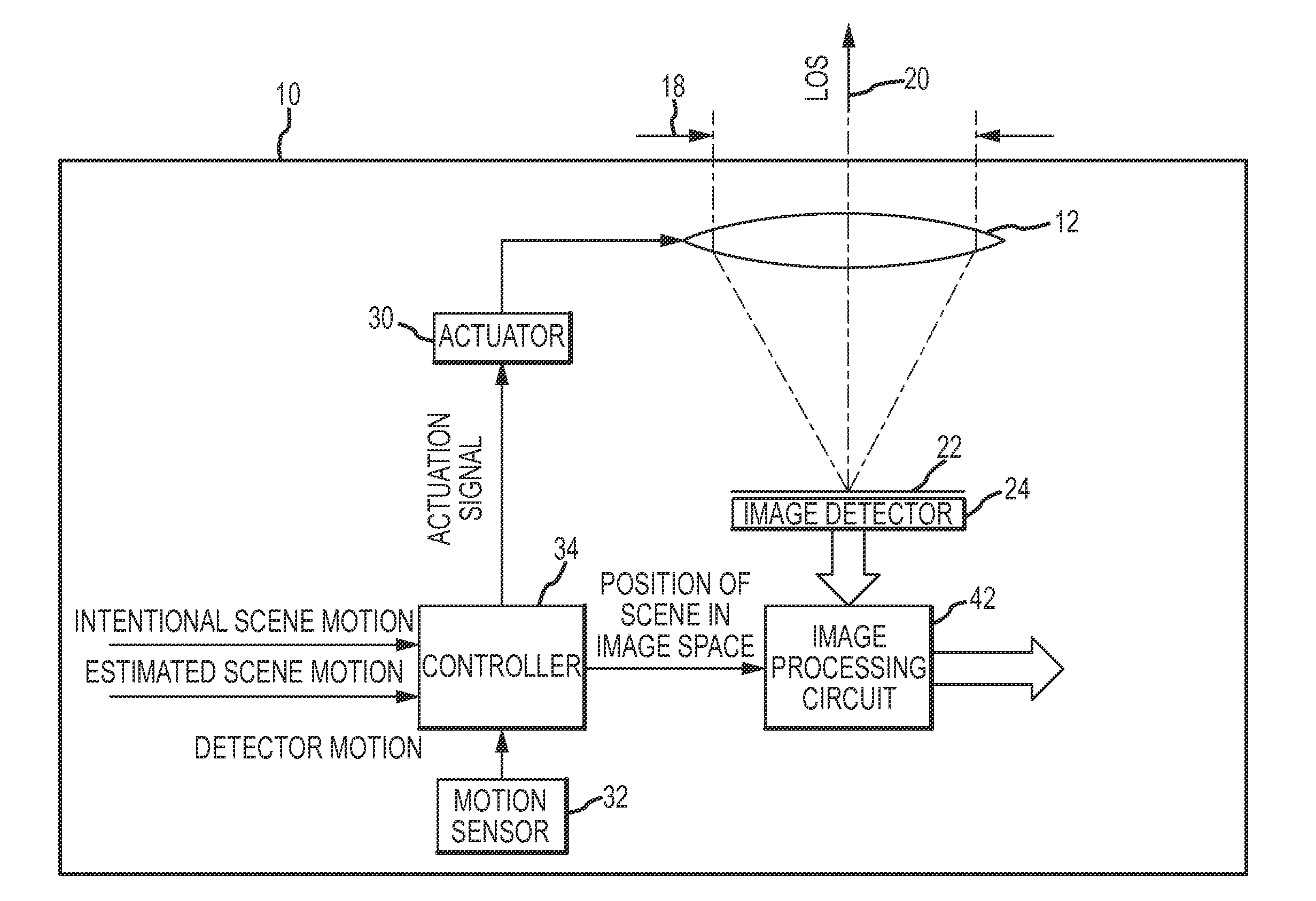Intra-frame optical-stabilization with intentional inter-frame scene motion
a technology of optical stabilization and inter-frame scene, applied in the field of imaging systems, can solve the problems of increasing effective noise, limited by registration and smear, and inability to fully eliminate intentional and necessary motion smear, so as to eliminate smearing in the image, and eliminate misregistration of the image
- Summary
- Abstract
- Description
- Claims
- Application Information
AI Technical Summary
Benefits of technology
Problems solved by technology
Method used
Image
Examples
Embodiment Construction
[0029]In an imaging system, in accordance with the present invention intentional scene motion across the image detector, and more particularly the rate of intentional scene motion is “decoupled” from smearing of the scene in the detected image by controlling the LOS motion between frames, as opposed to during frames, to produce the intentional scene motion in a discrete step across the image detector from frame-to-frame. The intentional scene motion may be quantized or provided as a sub-pixel dither signal to control the frame-to-frame sub-pixel phase of the detected image. In register / sum applications, this may substantially eliminate misregistration of the images at full-pixel resolution or allow for super-sampling of the images onto a higher resolution grid. The ability to decouple intentional scene motion from smearing and to control the frame-to-frame sub-pixel phase violates the accepted trade space of rate vs. smearing and defines a new trade space that relaxes the limitation...
PUM
 Login to View More
Login to View More Abstract
Description
Claims
Application Information
 Login to View More
Login to View More - R&D
- Intellectual Property
- Life Sciences
- Materials
- Tech Scout
- Unparalleled Data Quality
- Higher Quality Content
- 60% Fewer Hallucinations
Browse by: Latest US Patents, China's latest patents, Technical Efficacy Thesaurus, Application Domain, Technology Topic, Popular Technical Reports.
© 2025 PatSnap. All rights reserved.Legal|Privacy policy|Modern Slavery Act Transparency Statement|Sitemap|About US| Contact US: help@patsnap.com



